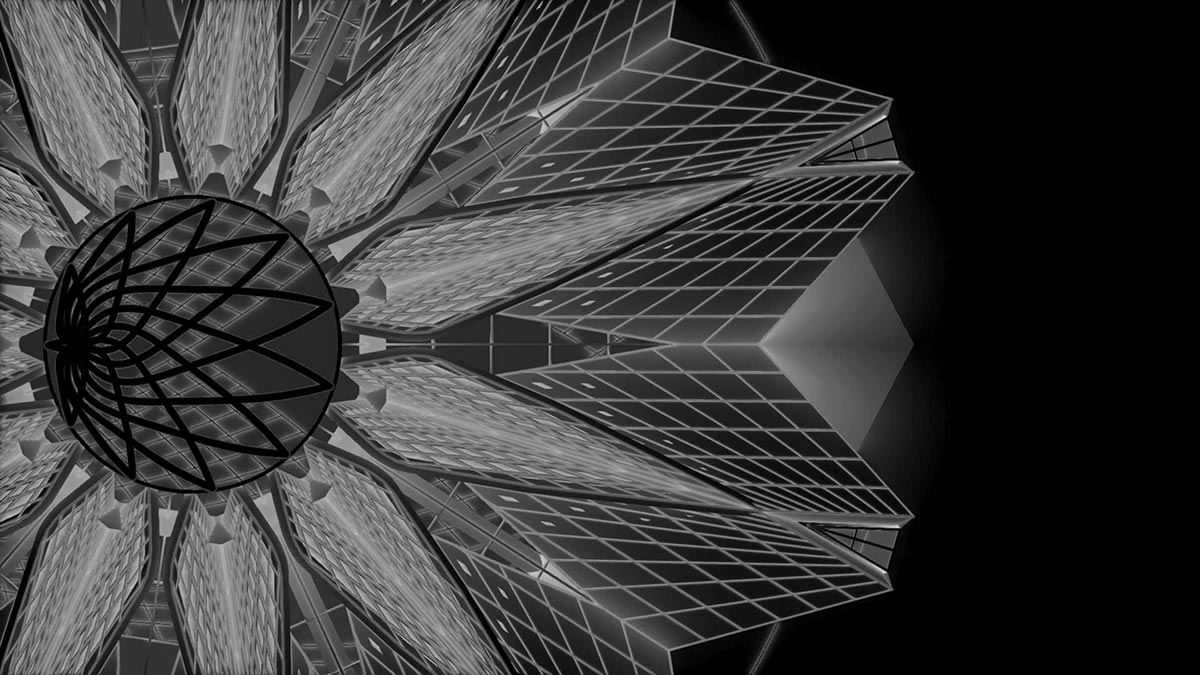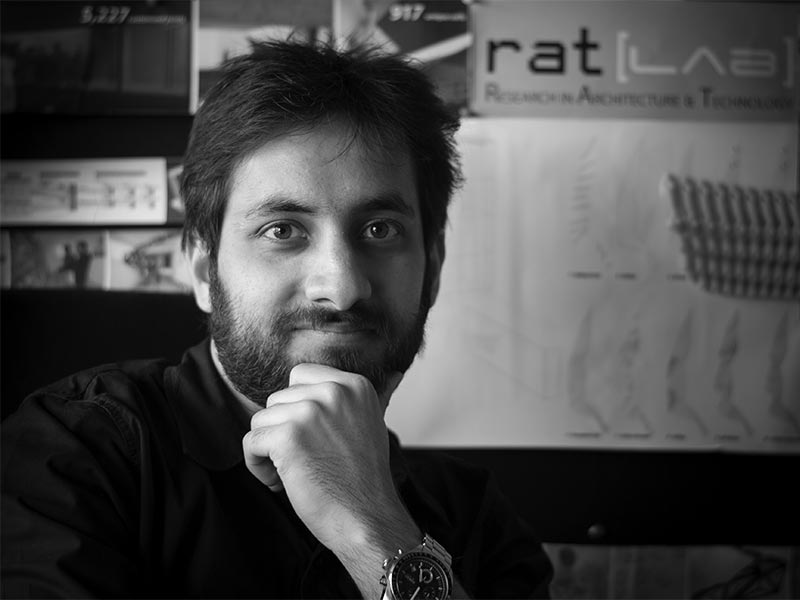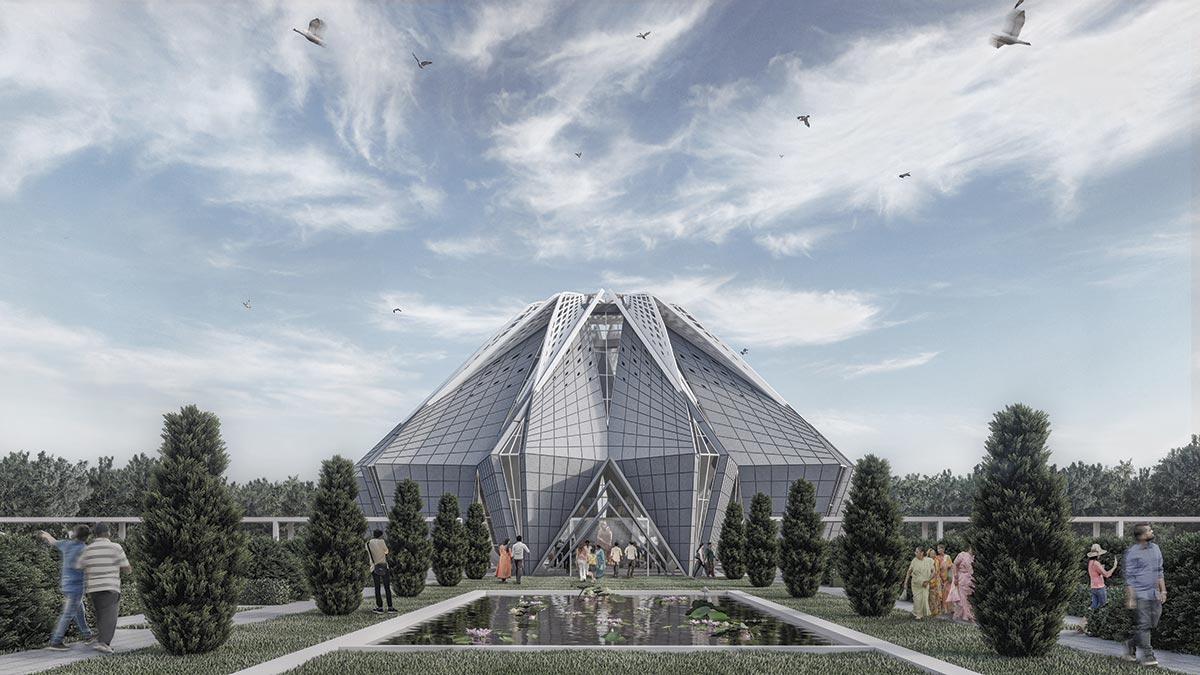
Fact File
Project Name: The Sacred Hendecagon: Shirdi Sai Baba Temple
Location: Koppur, Chennai, Tamil Nadu
Clients: Urban Tree
Completion Year: 2021-22
Gross Built Area: ~25000 sq.m (Temple Hall: 10,000 sqm)
Renderings: Sreekanth Damodaran at rat[LAB] Studio
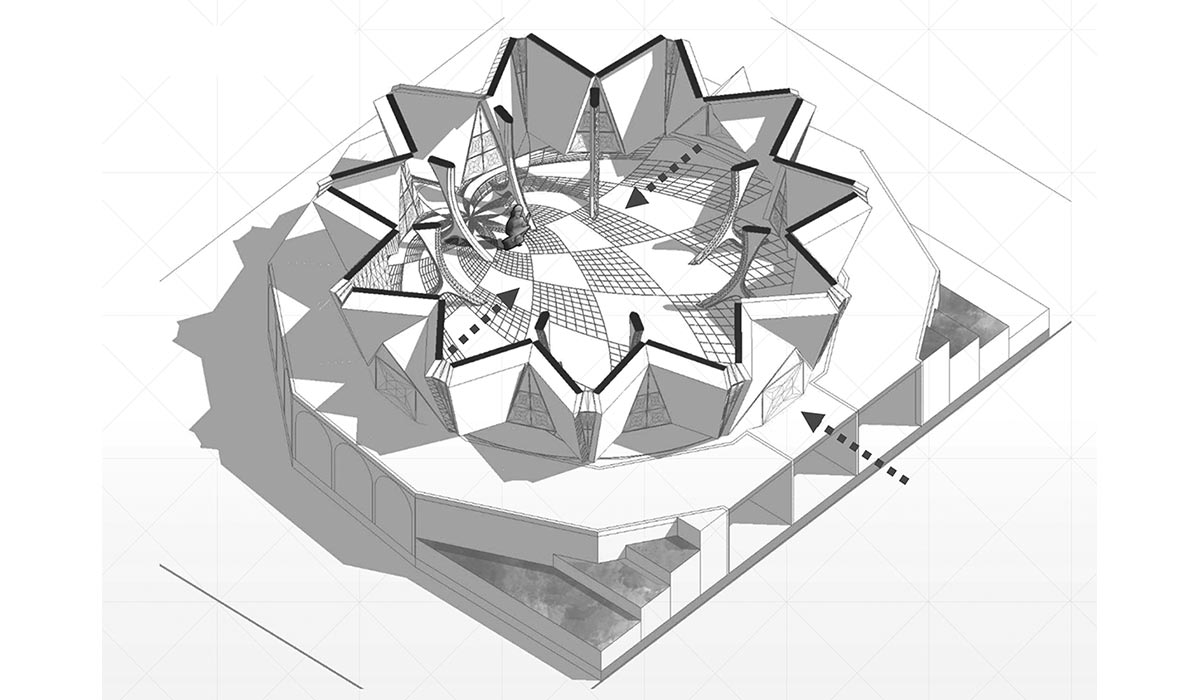
The Sai Temple will be unveiled on an 11.11-acre site that is proposed at the epicentre of a 338-acre master plan project of Chennai. The client brief had a strict indicative of using the number 11, owing to their belief in numerology and vastu. Parametric Design Consultants rat[LAB] was invited to join lead architects - Shilpa Architects as design collaborators.
Taking an unprecedented approach, the concept design developed with an 11-sided polygon – Hendecagon - articulated as a three-dimensional polyhedron. Known for their expertise in Computational Design and Parametric Techniques, rat[LAB] saw this as an untapped opportunity to explore computational design for a religious space in a novel manner. Using mathematics, sacred geometry, and structural logics, an algorithmic process was developed to use evolutionary computation to create a plethora of forms, using spatial and structural constraints as parameters. Hendecagon was evolved to three-dimensional spaces while evaluating environmental aspects such as daylight, radiation, shadow range as well as structural logics of ‘double-fold’ origami. Geometric constraints of the geometry revolved around number 11, with height of the apex at 11 X 5 = 55 meters, and radius of hendecagon as 11 X 5 = 55 meters.
This temple is going to be one of the rare projects of this scale where computational design, parametric methods and algorithmic approach is being deployed to design a spiritual space, making way for redefining a blend of contemporary and traditional architecture in a heritage-rich country
Principal Architect, Sushant Verma
The flooring pattern in the main hall is a mathematical looping system using 11 vertices of the hendecagon that folds to form interstitial spaces within the geometry. A recursive division of curves that create an asymmetry towards the deity creates a focal point at the ground level where the pattern curves and guides the visitors towards the deity for prayers and offerings. A pure white space from inside is magically lit by sunlight diffusing from the oculus on top, which maintains the purity and balance of the space by maintaining symmetry. Double fold origami structure allowed to create a rigid structure with fluidic columns that blend into the interior space while allowing a long-span shell-like structure.
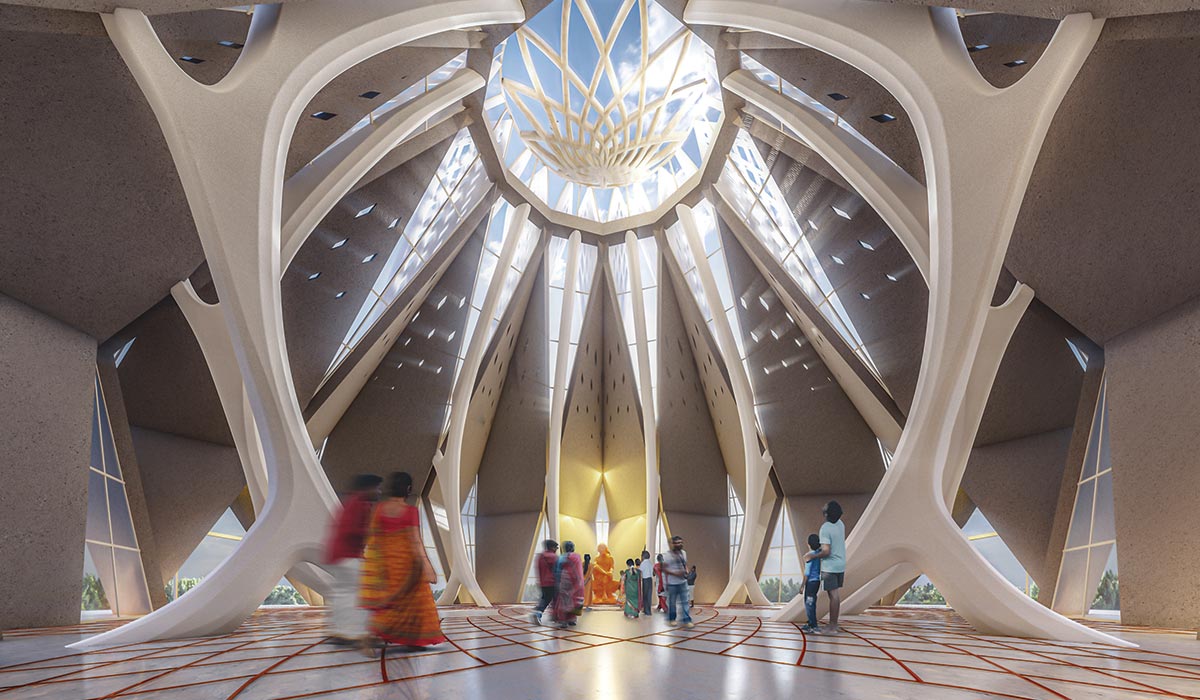
The master plan developed by Shilpa Architects, has been inspired by the Gode Neem tree of Shirdi, with a series of explorations on mathematical progressions, resulting in an Agama-shastre based plan as the foundation for the design. The design of the garbhagriha is form-driven while trying to adhere to principles of numerology, Vastu, and powered by computational design.
The concept is to provide a form that is as pure and perfect as possible in colour, texture and philosophy. The proportions and sizing of all aspects of the design rely heavily on the understanding of the golden ratio and principles of mathematics and origami. Surrounded by a series of promenades, podium and lush green landscape, the Sai temple is a reflection of spiritual contemplation that will appear 66m (11x6) above the ground, making a mesmerizing experience for visitors entering the temple. Promenade frames the view to the temple, as well as guides the devotees to the 154 ft (11x14) Sai statue.
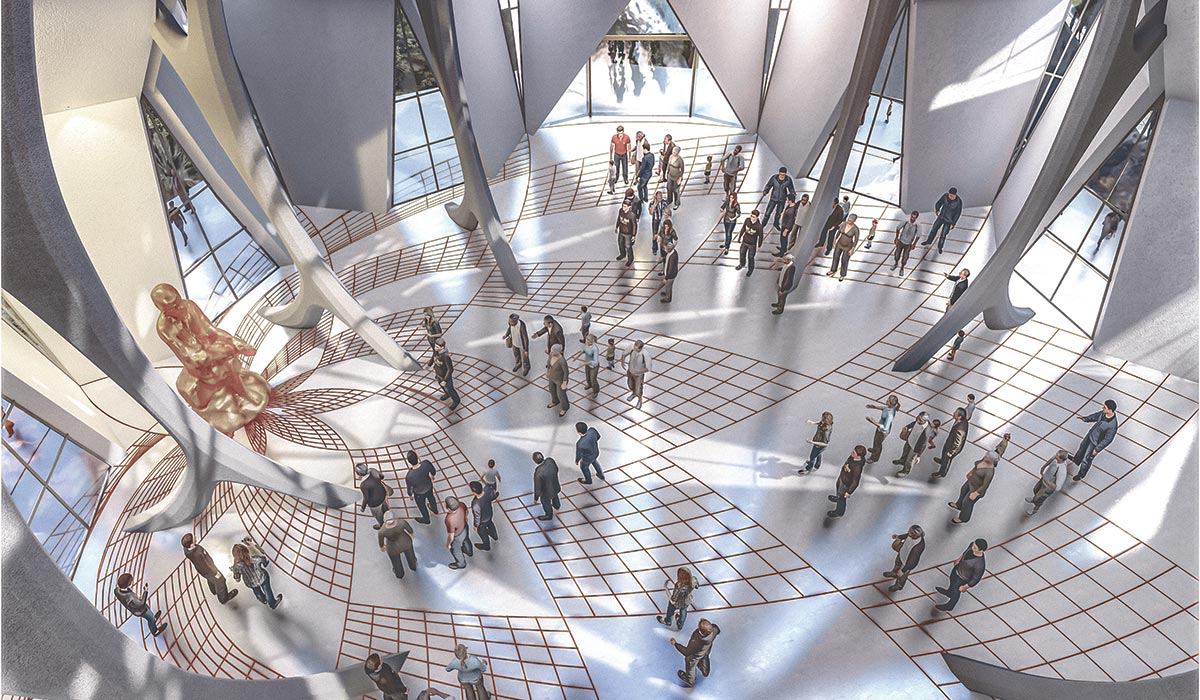
Comprising of 4 zones: Front promenade, Temple Complex, Rear Promenade, and Statue, the temple will be built on the principles of Vastu Purusha mandala. The Front promenade marks the beginning of the temple complex by inviting the visitors into the complex after drop-off. The area is spatially divided into counters for storing baggage and shoes, frisking and ablution areas. The first view of this architectural pilgrimage is revealed to the devotees at Gopuram. To keep the interest alive, the view is partly hidden through the landscape. Green strips and shops break the monotony of the 525 ft promenade walk on either side of the pathway.
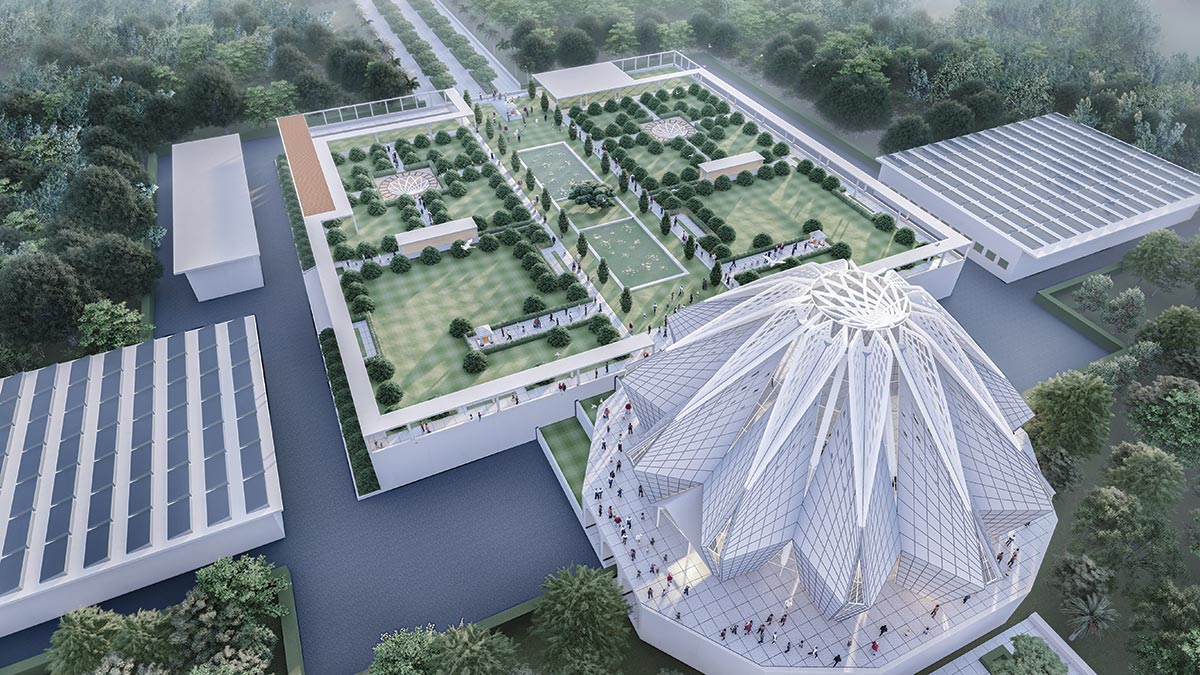
The area of prayer and meditation is based on the 11-point circle pattern that is reiterated throughout the design of gathering spaces and the roof of the garbagriha. The flooring of the garbagriha is done specifically to shift the focus to the far end of the room rather than the centre beneath the oculus of the polygonal roof intersects. Dividing the outer circumference into 11 equal segments, the position of the deity within the garbagriha is fixed. The arcs that radiate from this fixed position connect to the segment points on the circumference forming a petal-like pattern which is also translated to the oculus on the rooftop. This design measure creates a point of focus that is not the centre of the polygon while maintaining symmetry and sanctity of the Master Number.
